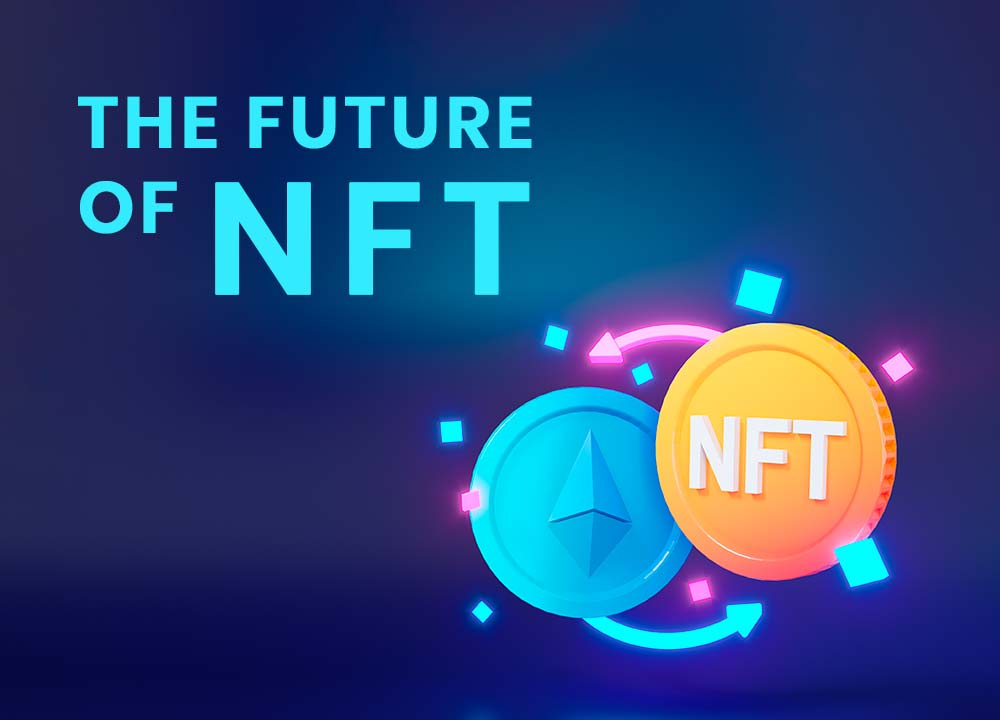What is the future of NFT? Is the market growing or is it a temporary thing that will disappear from the world? To answer the questions, you must first understand what NFT is and how it works:
What is NFT?
NFT stands for “non-fungible token.” It is a digital asset stored on a blockchain, a decentralized and secure digital ledger. Unlike cryptocurrencies such as Bitcoin or Ethereum, fungible and interchangeable, NFTs are unique and cannot be replicated or divided.
NFTs can take many forms, such as digital art, music, videos, or other types of digital content. They are bought and sold like any other asset, with transactions recorded on the blockchain. The ownership and authenticity of an NFT are verified through the blockchain, which provides a secure and tamper-proof record of the transaction.
One of the NFT’s key features is that they allow creators and artists to monetize their digital creations in a way that was not previously possible. NFTs can provide a way for artists to sell their work directly to buyers without having to go through traditional intermediaries like galleries or auction houses. This can potentially offer more control and financial benefits to creators.

Ethereum. Photo by Bastian Riccardi on Unsplash
What is the size of the NFT market?
To better understand the future of the NFT you need to understand its market. The size of the NFT market is difficult to determine precisely, as it is a relatively new and rapidly evolving technology. However, some estimates can provide some context:
- According to a report from NonFungible.com, the total value of NFT transactions in 2020 was around $250 million.
- In the first quarter of 2021, the NFT market saw a surge in activity, with total sales volume reaching $2 billion, according to data from DappRadar.
- The most expensive NFT ever sold as of September 2021 is a digital artwork by the artist Beeple, which sold for $69 million at a Christie’s auction in March 2021.
- The NFT market has significantly grown in various areas, including digital art, sports collectibles, and virtual real estate.
It’s worth noting that the NFT market is still in its early stages, and its future growth and development are difficult to predict. However, the current interest and investment in NFTs suggest significant potential for the technology to disrupt and transform the worlds of digital content and asset ownership.
Was the NFT a passing trend?
It’s too early to say definitively whether NFTs are a passing trend or not. NFTs have been around for a few years, but they have only gained widespread attention in the last year or so, especially in the art world.
While some people believe that NFTs are a passing trend, there are others who see them as an important innovation in the world of digital content and asset ownership. The fact that major players in the art world, such as Christie’s and Sotheby’s, have held auctions for NFTs suggests that there is serious interest in the technology.
However, it’s worth noting that the market for NFTs has experienced significant fluctuations in value over the past year, with some NFTs selling for millions of dollars while others have sold for much less. This volatility has led some people to question the long-term viability of NFTs as a form of investment or asset.
Ultimately, the future of NFTs will depend on various factors, including their adoption by creators, consumers, and businesses, as well as the development of new use cases and applications for the technology. It’s possible that NFTs will continue to be an important part of the digital landscape, but only time will tell whether they are truly here to stay.
What is the future of NFT?
The future of NFTs is still uncertain, as this relatively new technology is still evolving. However, there are some potential ways in which NFTs could impact the future of digital content and asset ownership:
- New forms of digital ownership: NFTs have the potential to allow for new forms of digital ownership, where users can own unique and verifiable digital assets. This could include things like virtual real estate, virtual goods, and even digital experiences.
- Alternative revenue streams for creators: NFTs can provide creators with a new way to monetize their digital creations, allowing them to earn money from digital content that might not otherwise have a clear path to monetization. This could create new opportunities for artists, musicians, and other creators to earn a living from their work.
- New marketplaces and platforms: As the market for NFTs continues to grow, we may see new marketplaces and platforms emerge that are specifically designed to facilitate the NFT’s buying and selling. This could create new business opportunities for entrepreneurs and investors looking to capitalize on this emerging market.
- Increased mainstream adoption: NFTs are still a niche technology, but as more people become aware of their potential uses and benefits, we may see increased mainstream adoption. This could include a wider range of digital content creators and consumers, as well as businesses and organizations looking to leverage the unique properties of NFTs.









